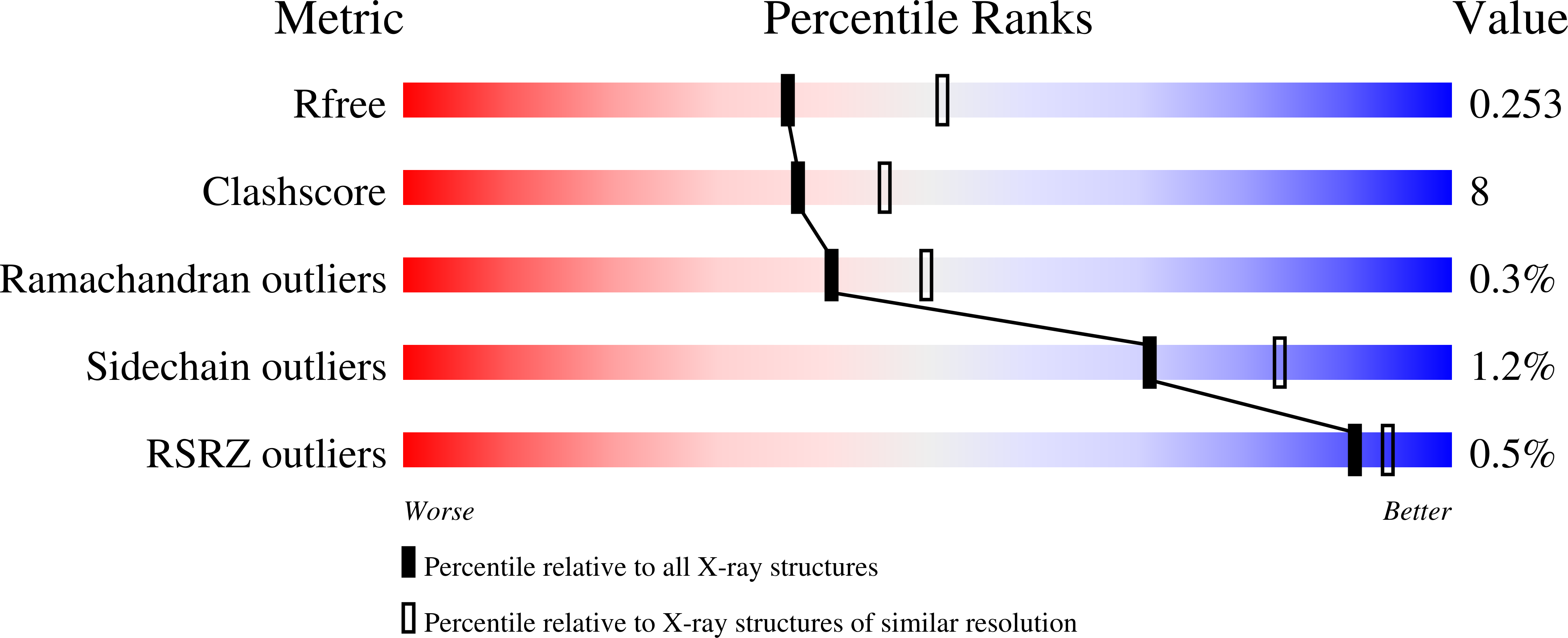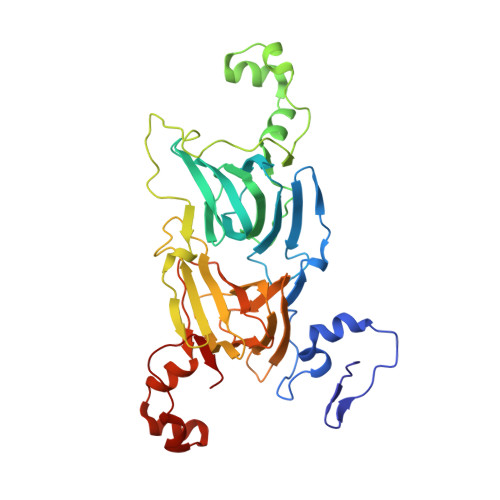A structural element that facilitates proton-coupled electron transfer in oxalate decarboxylase.
Saylor, B.T., Reinhardt, L.A., Lu, Z., Shukla, M.S., Nguyen, L., Cleland, W.W., Angerhofer, A., Allen, K.N., Richards, N.G.(2012) Biochemistry 51: 2911-2920
- PubMed: 22404040
- DOI: https://doi.org/10.1021/bi300001q
- Primary Citation of Related Structures:
3S0M - PubMed Abstract:
The conformational properties of an active-site loop segment, defined by residues Ser(161)-Glu(162)-Asn(163)-Ser(164), have been shown to be important for modulating the intrinsic reactivity of Mn(II) in the active site of Bacillus subtilis oxalate decarboxylase. We now detail the functional and structural consequences of removing a conserved Arg/Thr hydrogen-bonding interaction by site-specific mutagenesis. Hence, substitution of Thr-165 by a valine residue gives an OxDC variant (T165V) that exhibits impaired catalytic activity. Heavy-atom isotope effect measurements, in combination with the X-ray crystal structure of the T165V OxDC variant, demonstrate that the conserved Arg/Thr hydrogen bond is important for correctly locating the side chain of Glu-162, which mediates a proton-coupled electron transfer (PCET) step prior to decarboxylation in the catalytically competent form of OxDC. In addition, we show that the T165V OxDC variant exhibits a lower level of oxalate consumption per dioxygen molecule, consistent with the predictions of recent spin-trapping experiments [Imaram et al. (2011) Free Radicals Biol. Med. 50, 1009-1015]. This finding implies that dioxygen might participate as a reversible electron sink in two putative PCET steps and is not merely used to generate a protein-based radical or oxidized metal center.
Organizational Affiliation:
Department of Chemistry, University of Florida, Gainesville, Florida 32611, United States.


















